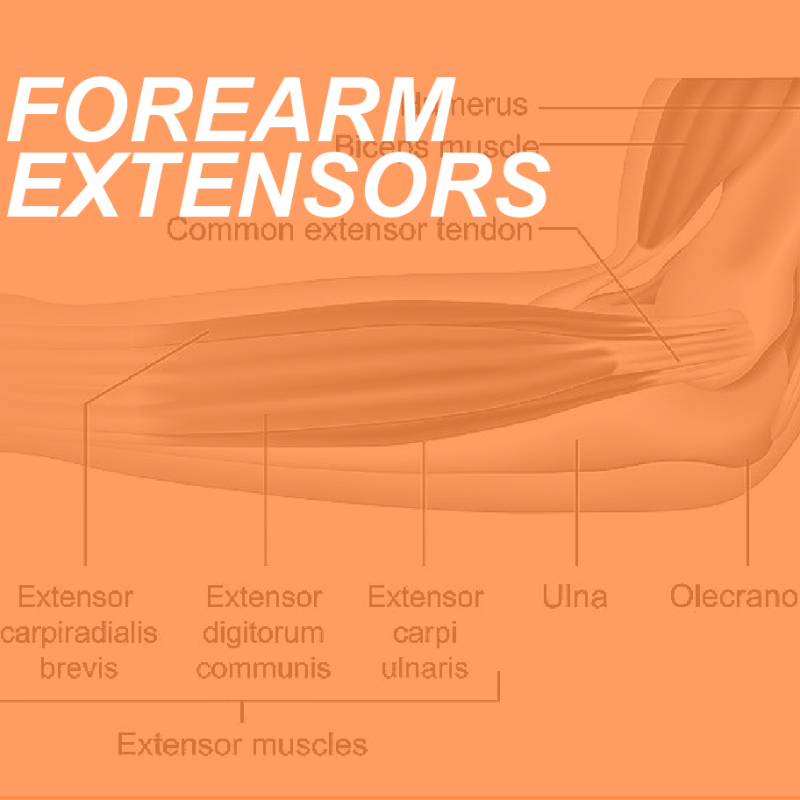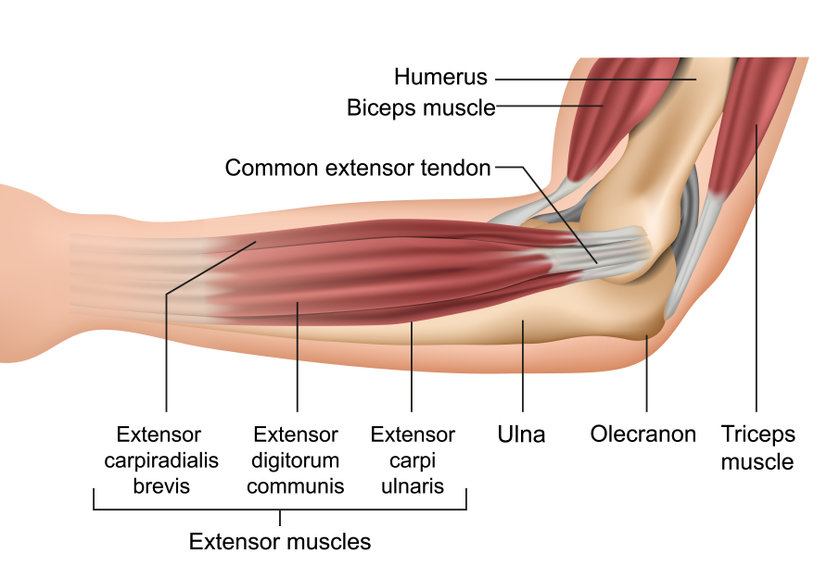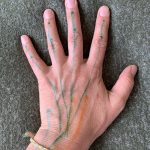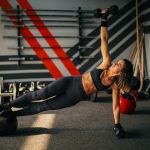
The extensors of the wrist and fingers are used during planks, when playing tennis, golf and every time a door is opened. Of the dozens of muscles that orchestrate these movements, there are four muscles in the posterior forearm working together during wrist and finger extension. Here is a breakdown of forearm extensor anatomy as a list and further down you can find them on yourself using a hands-on video.
Where are the wrist and finger extensors located?

Four muscles are found on the posterior forearm, originating on the lateral side of the arm and inserting out to the wrist and fingers. Pronating the forearm will bring them facing up so you can explore.

Extensor Carpi Radialis Longus (orange)- distal 1/3 of the supracondylar ridge of humerus to base of 2nd metacarpal
Extensor Carpi Radialis Brevis (orange)- common extensor tendon from the lateral epicondyle of humerus to base of 3rd metacarpal
Extensor Carpi Ulnaris (green) – common extensor tendon from the lateral epicondyle of humerus to base of 5th metacarpal
Extensor Digitorum Longus (green)- common extensor tendon from the lateral epicondyle of humerus to bases of middle & distal phalanges of 2-5 fingers
There’s a lot of words in each of these names, until we examine them closely. Carpi means wrist and digi means fingers. Extensor speaks for the action, while ulnaris and radialis refer to the bones. Plus, three of these muscles have the same origins, giving you less to memorize.
Explore your own forearm to get away from the lingo for a moment.
Palpate the lateral epicondyle of the humerus, this is where all of these muscles attach. The lateral epicondyle is located at the lateral side of the elbow flexor crease. It protrudes out away from the body, whereas the medial epicondyle of the forearm flexors protrudes toward the body. Extending your elbow and wrist while feeling around the outer edge will tighten the tendons, making them easier to identify. As you contract the muscles you can follow them to the insertion points in the wrist and fingers.
Take it a step further by following along with this wrist and forearm extensor video. Grab some washable markers before you click play.
When you’re done coloring, snap a photo and post it in our anatomy group.
Identifying where these muscles are located enhances body awareness. When you know where muscles attach you can exercise them effectively, rest them when overtired and massage the muscle bellies for relaxation.
Forearm Extensor Exercises
As with all muscles, moving the attachments closer to each other shortens the muscle. Add resistance and you will get a contraction. Any time the wrist is extended by bringing the back of the hand closer to the forearm these muscles are contracting. Even when the wrist is being held in neutral, as it is during bicep curls, you will be engaging the extensors to stabilize the wrist.
Wrist Extensor Exercises:
Wrist extensions
Tricep extensions
Planks
How do you loosen short forearm muscles?
To stretch the extensors of the wrist and fingers, bring the attachment sites away from one another, into wrist flexion (extend your arm and tuck your hand under as you would in a doggie paddle when swimming).
Hand and forearm massage is a great way to relax these muscles and enhance blood flow for recovery and repair as well. It’s one area of the body that a person can massage on their own, which is why teaching a client where these muscles are is helpful. Encourage your clients to massage their forearms and hands in the evening before bed. It’s a great alternative to screen time before sleep, helping to reduce stress and relax.
Learning about muscles enhances the mind-body connection and expands understanding about the fascinating body we all get to live in. Happy exploring!







